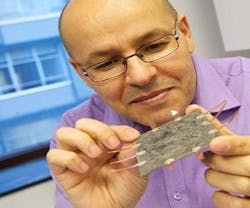Smart Paint to Revolutionize Structure Safety
Researchers at the University of Strathclyde in Glasgow, Scotland, are developing a low-cost smart paint that can detect faults at the microscopic level in structures such as wind turbines, mines, and bridges before any damage occur.
The environmentally-friendly paint utilizes nanotechnology and could potentially save huge amounts of time and money that are traditionally spent on assessing large structures.
The smart paint can be applied to any surface and is formed using a recycled waste product known as fly ash and highly aligned carbon nanotubes. It has a cement-like property that makes it ideal for tasks in harsh environments.
Dr Mohamed Saafi, of the University's Department of Civil Engineering, says: "The development of this smart paint technology could have far-reaching implications for the way we monitor the safety of large structures all over the world.”
The research has been carried out at Strathclyde with Dr Saafi working alongside David McGahon, who initiated the work as part of his PhD project. With fly ash being the main material used to make the paint, it costs just 1% of widely used inspection methods.
"The properties of the fly ash give the paint a durability that will allow it to be used in any environment which will be a massive advantage in areas where the weather can make safety monitoring particularly difficult,” says Saafi.
